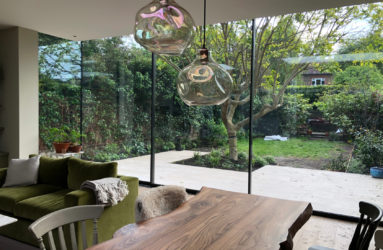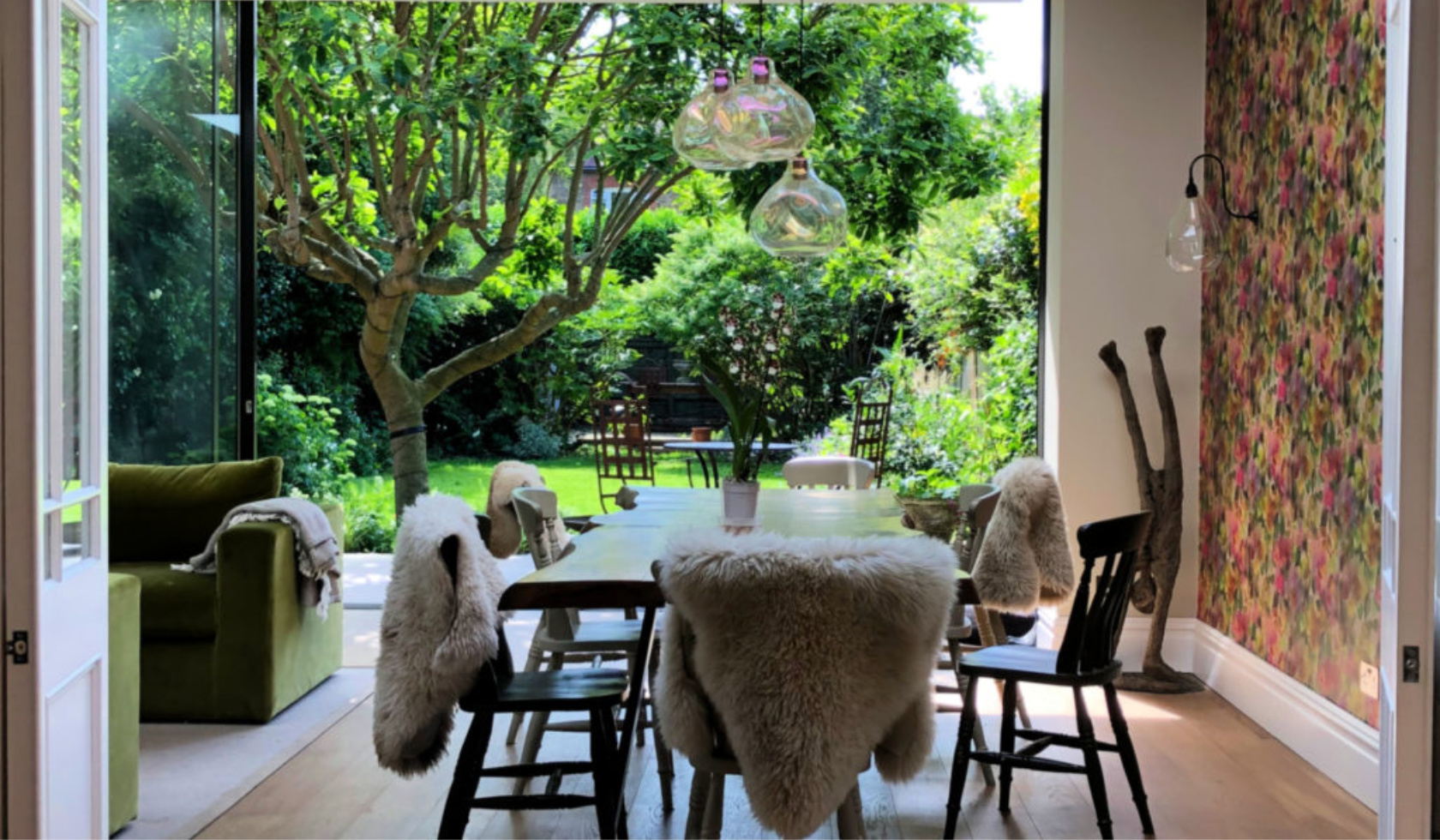Make the Most of Your Garden from Inside your home
The trend for opening up the back of your house to bring more light into your home has moved the spotlight onto the garden. At the end of the interior project the garden design begins. Creating a harmonious design that merges the interior and exterior, ensures you make the most of your garden.
For this tip, take a look at this property in Putney, which has been re-designed with glass sliding doors that blur the lines between the interior living space and garden. Though the glass itself eliminates the barrier between the two environments, we wanted to find ways to connect the space in a more pervasive way. Follow the steps below to create a harmony between your home and garden, that brings the outdoor in:
Floors & Walls
Start with the bare necessities when connecting the indoor and outdoor rooms. Choose a floor for your interior that complements the patio outside. Interior and exterior flooring can have different functions, so it is also important to also bear this in mind this when selecting the material.
Engineered wood is a great option for underfloor heating. For the Putney property, we installed this beautiful, wide-planked, smoked oak by Havwood. Moving outside, we considered using wood-effect porcelain on the patio to blend the floor inside and out. Eventually we settled for a stone-effect porcelain with a slightly paler colour but very similar warm tone to the wood inside. The shadows thrown by the leaves onto both the patio outdoors and the flooring within draw the two areas together and make for a beautiful decorative effect.
Take your colour scheme from the interior floors and walls into the garden. In this case, the interior palette had be chosen to link to the garden with natural wood and green as the main shade. We then took the colours in the wallpaper into the flowers outside. When the flowers are in full bloom, they harmonise with the pink floral wallpaper design. Remember to make sure that each plant is positioned in the perfect spot so that it would grow and flower, to create the full effect.
Styling
Consider the individual style you chose for your interior and how you can take that out into your garden. For example, if your style is soft and and eclectic, consider how that could flow into your garden. Choose a planting plan that incorporates soft curves rather than hard lines, vintage garden furniture rather than modern pieces, and romantic rather than exotic plants.
Direct your outdoor lighting so that it highlights a specific feature. If the light doesn’t meet an object, it will be lost as it vanishes into the sky. Try to pick just a few stunning spots to highlight, rather than creating a wash of light across the garden. Just enough so that you look out onto a pretty picture at night. In this case the magnolia has been lit with twinkly little lights, rather than a single beam. Placing a few lights at the sides and bottom of the enclosure will also lead you down the garden at night.
Function
Think about how you could change the design of the garden to enhance your enjoyment of the space. Here, we already had a large dining table in the new extension, so we made sure that the patio had enough space for a little breakfast table to sit under the magnolia in the mornings.
Another fun idea is to incorporate a vegetable garden. This might just be a few containers or a separate vegetable bed. Here we chose to mix vegetables and flowers throughout. We also planted herbs near the sliding doors so that we could enjoy their fragrance and they can easily be picked. Team this with your barbecue and you have a full outdoor kitchen!
Location & Environment
Which direction your garden faces will have have an impact on the climate of your outdoor room. South and west facing gardens with floor to ceiling glass doors require shading and ventilation to ensure temperature control so that the new interior doesn’t get too hot in the Summer. Your garden design can help with this. Here the magnolia is the focal point for the scheme. The tree provides shade in the summer and maximum light in the winter when the leaves have dropped. Canopies, pergolas. climbing plants and shrubs are all natural tools to turn to to help with light and shade, whilst a garden design with high fencing, hedges, shrubs and trees can also help to shield urban gardens that are overlooked by neighbours.
There are also many ways that your garden can support the environment: Capturing rainwater, creating your own compost, adding a living roof on your extension, keeping real grass and plants rather than fake alternatives and choosing environmentally friendly products. The garden has carefully selected plants that would support butterflies, bees and mini-beasts.
Most gardens look stunning in the spring, but adding more greenery will ensure your garden looks lovely throughout the year. Here we planted grasses at the bottom of the magnolia to create a “natural jungle zone”. Likewise, shrubs and evergreen hold the gardens shape in all seasons. Create a planting plan so that there are always pops of colour or elements of interest for every season.
Structuring your garden can be challenging, but merging the interior and exterior elements of your home will ensure you get the most out of your outdoor room. If you are unsure where to start, or would like some additional guidance, consider enlisting one of our buddies to assist.
All images from Decorbuddi projects










